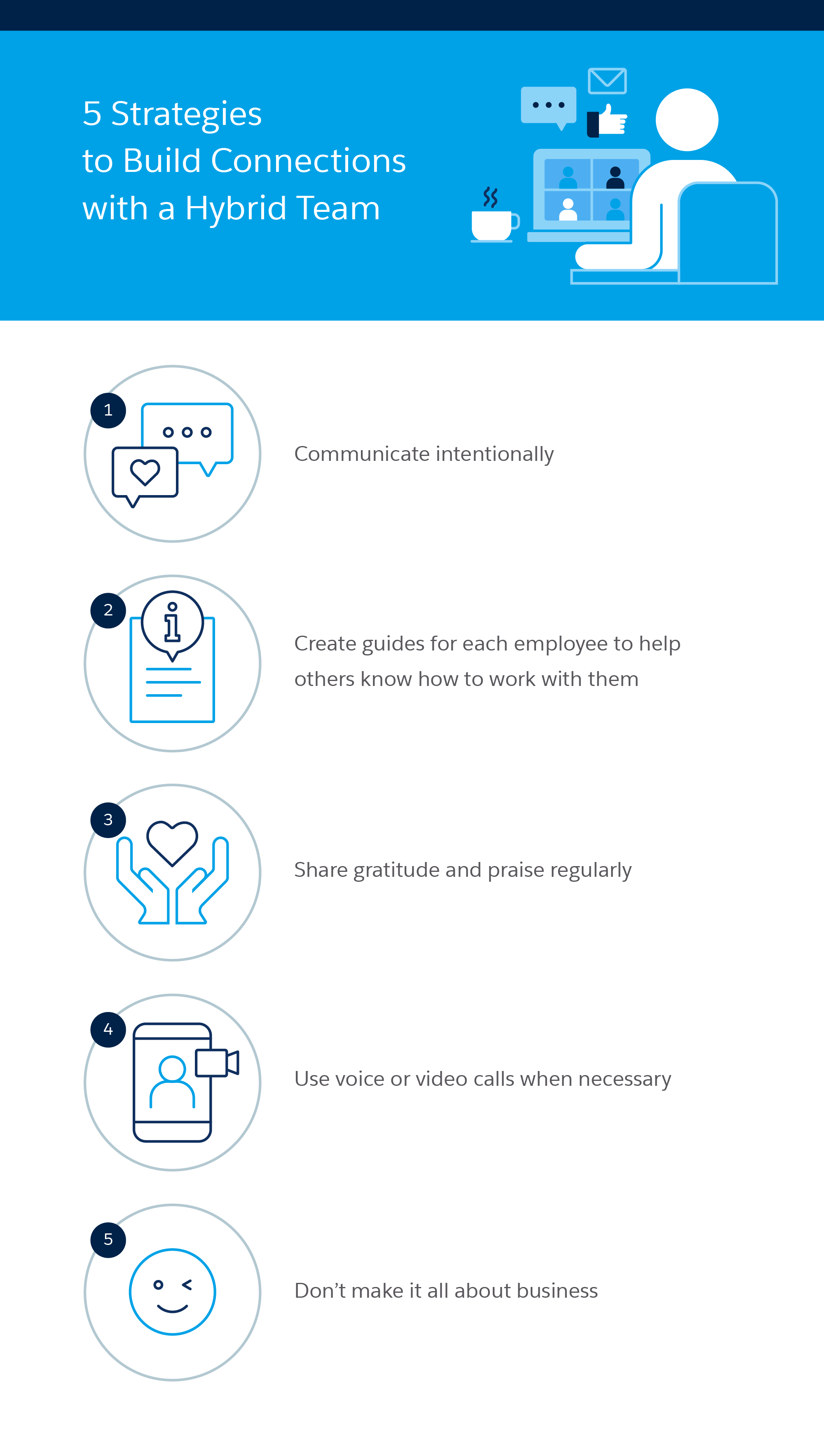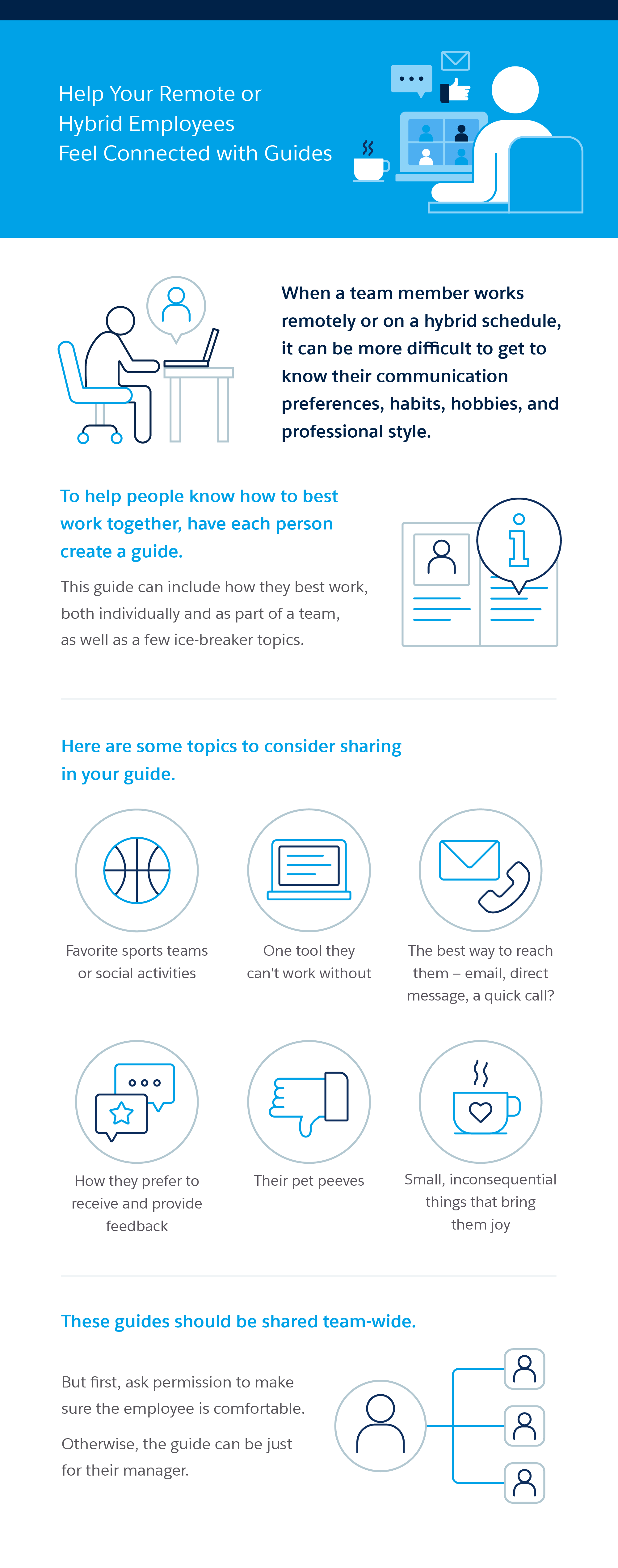The way in-office employees work is changing. In 2020, many office workers moved to remote work for the first time. For others, remote work is nothing new. In fact, 32 per cent of Canadian employees work most of their hours from home, compared to just four per cent in 2016.
For many office workers, remote work is here to stay. Some corporations, including Facebook and Salesforce, are embracing remote work. Other big brands, such as Citibank and Uber, allow hybrid work, meaning employees work from home a few days a week.
While there are many benefits to remote work, including improved work-life balance, higher productivity, and the ability to attract top talent, there are some drawbacks, especially when teams consist of a hybrid of in-office and remote employees.
Leaders must learn to navigate communication and build connections with fully or partially remote teams. Additionally, managers must find ways to keep remote workers in the loop and ensure they feel as much a part of the team as in-office employees.
Tackling these challenges requires acknowledging the inherent differences between remote, hybrid, and in-office workers, and finding methods to create stronger connections.

5 Strategies to Build Connections with a Hybrid Team
Improving connections at work does more than increase happiness or job satisfaction. It is about protecting one of your organization's most important assets: your people. Adjusting to remote and hybrid teams, however, requires a dedicated approach to building connections.
Here are five strategies to help managers build stronger connections within their hybrid team.
1. Communicate Intentionally
One of the major challenges of managing or working with remote workers is communication. When some team members work at home, it can be easy to fall into a mindset of "out of sight, out of mind." This is generally an issue when part of the team is remote while others work at the office. In addition, remote work takes away those chance encounters at the copier or kitchen where employees can chat and get to know each other.
That makes it more important than ever to set aside time — ideally at least once a week — to connect with direct reports. Discuss current projects, plans for the coming week, and non-work-related topics such as their favourite sports team, their families or hobbies.
Take the time to recognize how both an employee’s personality and their work location can impact their preferred communication styles. For example, an introverted, fully remote employee may benefit from a weekly work-related check-in, as well as a monthly group-wide virtual "coffee break." A hybrid employee may prefer to meet for in-person check-ins when they work from the office so they can focus on deep work while at home.
Improving communication with remote workers requires intention, but the benefits are worth the effort.
2. Create a Guide to Working with You
In the minutes before an in-person meeting starts, you might learn Alex doesn't like cream in their coffee or James is into kayaking. These small details about a person allow you to relate to your team members and create a connection. (Maybe you also avoid cream and love kayaking!)
Unfortunately, remote employees often miss out on these quick moments to share details about who they are as people. A guide to working with you helps new team members get to know who you are, what you like, and how you prefer to work. You can encourage them to make their own guides, too, so everyone can share their preferences.
This can speed up sharing essential information about who you are as a person, allowing you to create connections faster and work together more efficiently.
Here are few topics to consider sharing in your guide:
Favourite sports teams or social activities
One tool you can't work without
The best way to reach you — email, direct message, a quick call?
Preferred Working Hours
How you prefer to receive and provide feedback
Pet peeves and their opposite: small, inconsequential objects or hobbies that bring you joy
Aim to keep the guide short. In most cases, a few hundred words should suffice.

3. Share Gratitude and Praise Regularly
Praise matters. In a survey from Achievers, 44 per cent of employees who don't feel recognized or engaged at work said they plan to switch jobs in the next year. Additionally, workplace recognition can increase productivity for businesses, so offering gratitude and praise isn't just good for people: It's good for the company’s bottom line as well.
When employees do not work from one central location, remembering to share praise and gratitude can be a challenge. Make it a habit to acknowledge employees, especially remote or hybrid team members, for a job well done. This can be done at the beginning of a monthly coffee chat or during a weekly all-hands meeting. Make sure to be specific and share the impact of the actions when possible.
Verbal recognition, virtual high-fives, and employee recognition point systems can help ensure employees feel appreciated no matter where they work.
4. Use Voice or Video Calls When Necessary
While many workers prefer email to meetings, back and forth, asynchronous messaging can be less effective than alternative options, especially with multiple people on a project or when work hours don't overlap.
Email and chat tools make it easier to talk to your team, but sometimes they just aren't enough. To reduce frustration, miscommunication, or misunderstandings, consider taking the conversation to a video call. With the increase in screen time through the pandemic, sometimes giving your eyes a rest and taking a good old fashioned voice call is the best way to get to the heart of the matter quickly and efficiently. Try taking your call on a walk and get some movement in your day. When in doubt, talk it out.

5. Don't Make It All About Business
For many employees, one major benefit of working in an office is the random, quick conversations that occur. For example, you might learn of your coworkers’ new hobbies while having cake for a team member’s birthday in the office kitchen.
With a remote team, you can still host a virtual celebration, but the video format may limit the number of people included in and the breadth of the conversation. Also, in a hybrid team, remote workers might be left out of the celebration entirely.
To encourage those random conversations that help teams bond, it is crucial to avoid focusing all communications on work. Sometimes you just want to chat about food, a favorite television show, or your plans for the weekend.
Here are four tips for creating opportunities for personal conversations:
Start remote meetings with ice-breaker questions. Examples can include asking about team members’ favourite foods, travel plans or bucket list aspirations.
Create channels or threads for non-work conversations. For example, a channel or chat group can be used for people who opt into discussing favorite television shows. These should be limited or easy to mute so employees can focus when they need to.
Plan virtual games, such as trivia or escape room challenges. While these might feel silly, especially online, they are a great way to build connections and lower stress.
Host a weekly or monthly Friday virtual happy hour and focus on fun conversations. Allow break-out rooms for smaller group conversations.
Connecting with Remote Teams Is an Ongoing Process
More employees are choosing to work remotely, as fully remote digital nomads or as hybrid employees who split time between their home and the office. Building connections is an ongoing challenge that organizations must learn to navigate.
Be mindful of the differences between people and recognize the different approaches required for hybrid, remote, and in-office personnel. And remember, not every connection strategy will work for every team or organization.
Test the strategies above, then ask your team for feedback. Is there a better time for office trivia? Are ice-breaker questions taking over important business calls? Use that feedback to recalibrate your approach and continue striving toward helping your hybrid team feel connected.


